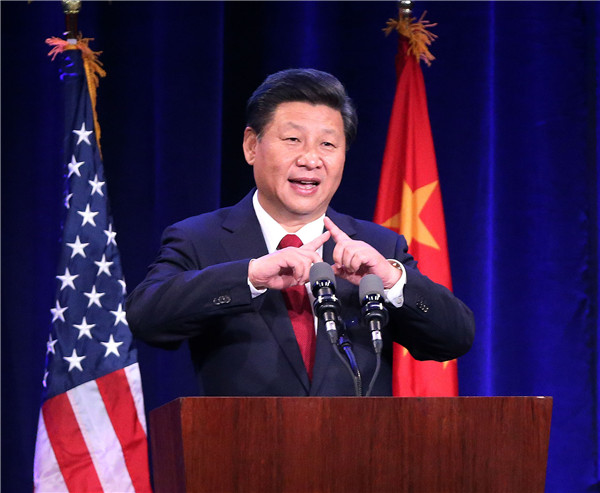 |
|
President Xi Jinping delivers a speech during a welcome banquet jointly hosted by Washington State government and friendly communities in Seattle, the US, Sept 22, 2015.[Photo/Xinhua] |
It's a question I'm often asked: What drives President Xi Jinping's robust foreign policy? The assumption is that Xi has upped China's global game, making the country's international relations more proactive and engaging, some say more muscular and aggressive. All recognize that China is now involved with every important issue in world affairs. Moreover, China is starting to shape the agenda of international discourse, not just react to the ideas and actions of others.
Examples of China's vigorous foreign policy under President Xi are well known: the Belt and Road Initiative reaching out to some 60 countries, Asian Infrastructure Investment Bank, new kind of major power relations with the US, strategic partnership with Russia, "golden era" in relations with the UK, high-profile state visits to Germany and France, support for African development, climate change, the list goes on. In less than three years as China's president, Xi has visited more than three dozen countries.
What motivates China's diplomatic transformation? There is no secret answer, no master plan hatched behind the guarded walls of Zhongnanhai, where China's leaders work in central Beijing. Rather, a confluence of factors comes together, enhancing China's role on the world's stage.
China recognizes that to be a major power, with its political influence approaching its economic strength, as well as to protect its own vital interests, the country must mount a pro-active diplomacy. Following are eight drivers, or underlying motivations, of China's new kind of foreign policy.
One, China has debilitating overcapacity in heavy industries, like steel, cement, aluminum, plate glass, chemicals, and if these can be transported and utilized by less developed countries, all benefit.
Two, China is embarking on its comprehensive 13th Five-Year Plan (2016-20), with the ambitious goal of becoming a moderately prosperous society by 2020. Foreign trade of higher value-added products, plus access to advanced foreign technologies, are an integral part of the Plan-and these can be facilitated by China's diplomacy and good image.

I’ve lived in China for quite a considerable time including my graduate school years, travelled and worked in a few cities and still choose my destination taking into consideration the density of smog or PM2.5 particulate matter in the region.